Keeping the School Environment Safe and Comfortable
Posted on: 10/10/2025
A safe, comfortable and energy-efficient school environment is about more than just maintaining the temperature and air conditioning — it’s about intelligent monitoring and control of indoor parameters.
1. The Role of Environmental Monitoring in Schools
In schools, students and teachers spend most of their time in indoor environments such as classrooms, infirmaries, auditoriums, and gyms. Indoor Air Quality (IAQ) — which includes building pressure, temperature, humidity, CO₂ levels, and Volatile Organic Compounds (VOCs) — directly affects health, concentration, and learning efficiency.
Maintaining CO₂ and other environmental parameters within recommended limits not only helps reduce fatigue and improve cognitive performance but also enhances the efficiency of HVAC systems, leading to energy savings.
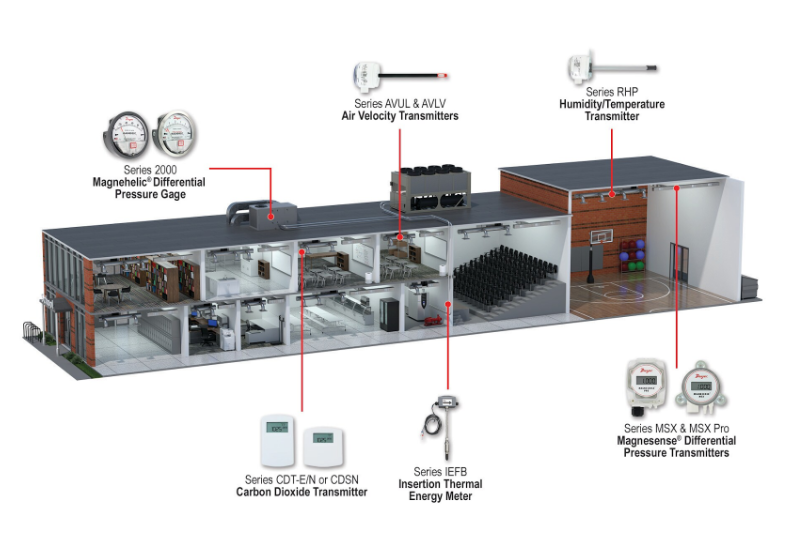
2. Measuring Devices and Their Roles in Schools
To monitor and control environmental factors, the following types of devices play crucial roles:
• CO₂, Temperature & Humidity Sensors
CO₂ transmitters (Series CDT) measure both CO₂ concentration and temperature. Combination sensors (e.g., CDTR) add humidity measurement in one device, helping reduce installation costs. More advanced models (CDTA) integrate setpoint and overrange control functions with Modbus or BACnet communication.
Another model (CDTV) simultaneously measures CO₂ and VOCs to detect volatile substances that may accumulate in under-occupied rooms.
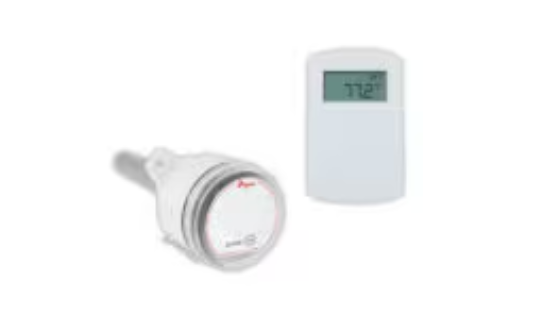
Carbon Dioxide, Relative Humidity, and Temperature Transmitters, Series CDTR
• Temperature & Humidity Sensors
To ensure comfort, temperature and humidity must be maintained within optimal ranges. Devices such as RHP-E/N, RHPLC, and RHP-D measure temperature and humidity and can be installed on ducts or walls. Independent temperature sensors (Series TE, TE-WSS, TE-E/N) are suitable for various applications such as wall, duct, or immersion mounting.
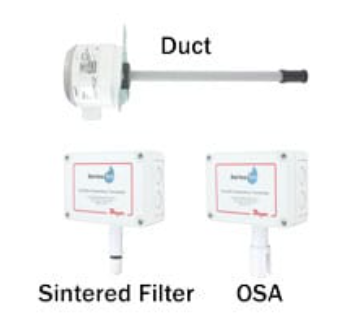
Temperature/Humidity Transmitters, Series RHP
• Room Pressure & Status Monitoring
In areas such as infirmaries or isolation rooms, maintaining proper (positive or negative) pressure is essential to prevent the spread of contaminants. Room status monitors (RSME) provide a graphical interface displaying pressure, humidity, temperature, door status, and alarms. Color-coded screens (green, yellow, red) make it easy to identify when values exceed thresholds.
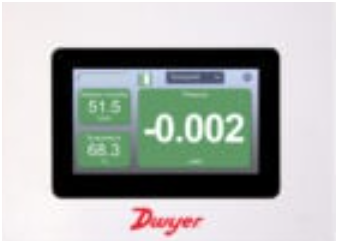
Room Status Monitor, Series RSME
• Air Velocity / Airflow Sensors
To meet air exchange standards (CDC, ASHRAE) in infirmaries or isolation rooms, air velocity measurement is required. Devices such as AVUL and AVLV measure airflow velocity and provide linear signals for control systems to regulate ventilation.
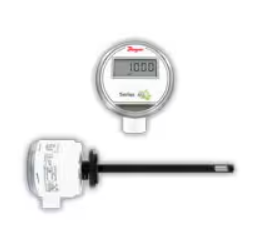
Air Velocity Transmitter, Series AVUL
• Differential Pressure Sensors
Differential pressure across HVAC filters indicates clogging or reduced airflow. MSX / MSX Pro Magnesense® devices measure differential pressure and trigger alerts when limits are exceeded, ensuring the system doesn’t operate under strain.
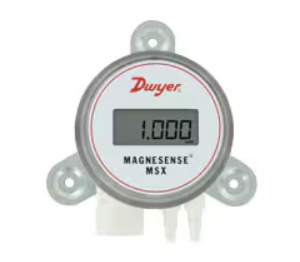
Magnesense® Differential Pressure Transmitter, Series MSX
• Occupancy Sensors
Occupancy sensors (OSC / OSW) detect human presence in rooms to automatically control HVAC and lighting systems based on actual usage, minimizing energy waste when spaces are unoccupied.
• Airflow Balancing Tools
In large spaces such as auditoriums and gyms, balancing airflow at diffusers is essential to ensure even pressure and air distribution. Tools like the SMART Air Hood (Series SAH) enable technicians to quickly and accurately measure and balance airflow at diffusers.
3. Benefits of Implementing Environmental Monitoring Systems in Schools
-
Enhanced teaching and learning performance: Stable indoor environments improve focus and productivity for both students and teachers.
-
Energy efficiency: HVAC systems respond to real-time data, reducing energy consumption and equipment wear.
-
Health protection: Controlling humidity, air cleanliness, and room pressure minimizes the risks of bacteria, mold, and pollutants.
-
Transparency and reliability: Environmental data can be displayed for teachers, parents, and students to ensure awareness and trust in control measures.
-
Maintenance and operation support: Early alerts for filter blockages or pressure issues help schedule timely maintenance and prevent system failures.
4. Key Considerations for Design and Implementation
-
Install sensors at representative locations such as classrooms, corridors, infirmaries, and gyms.
-
Prioritize multifunctional devices to reduce wiring and installation costs.
-
Ensure open communication protocols (Modbus, BACnet) for easy integration with Building Management Systems (BMS).
-
Regularly calibrate sensors to maintain data accuracy over time.
-
For rooms requiring special pressure control (e.g., isolation rooms), ensure precise pressure and airflow regulation.
-
Integrate occupancy sensors with automated control systems to save energy in unoccupied rooms.
5. Conclusion
A safe, comfortable, and energy-efficient learning environment involves more than just maintaining temperature and air conditioning — it requires intelligent monitoring and control of indoor parameters. Using sensors for CO₂, humidity, temperature, pressure, and airflow enables schools to proactively manage conditions, enhance the learning experience, and protect the health of both teachers and students.
DLK — a trusted distributor of environmental monitoring equipment, providing comprehensive solutions for schools and smart buildings across Vietnam.